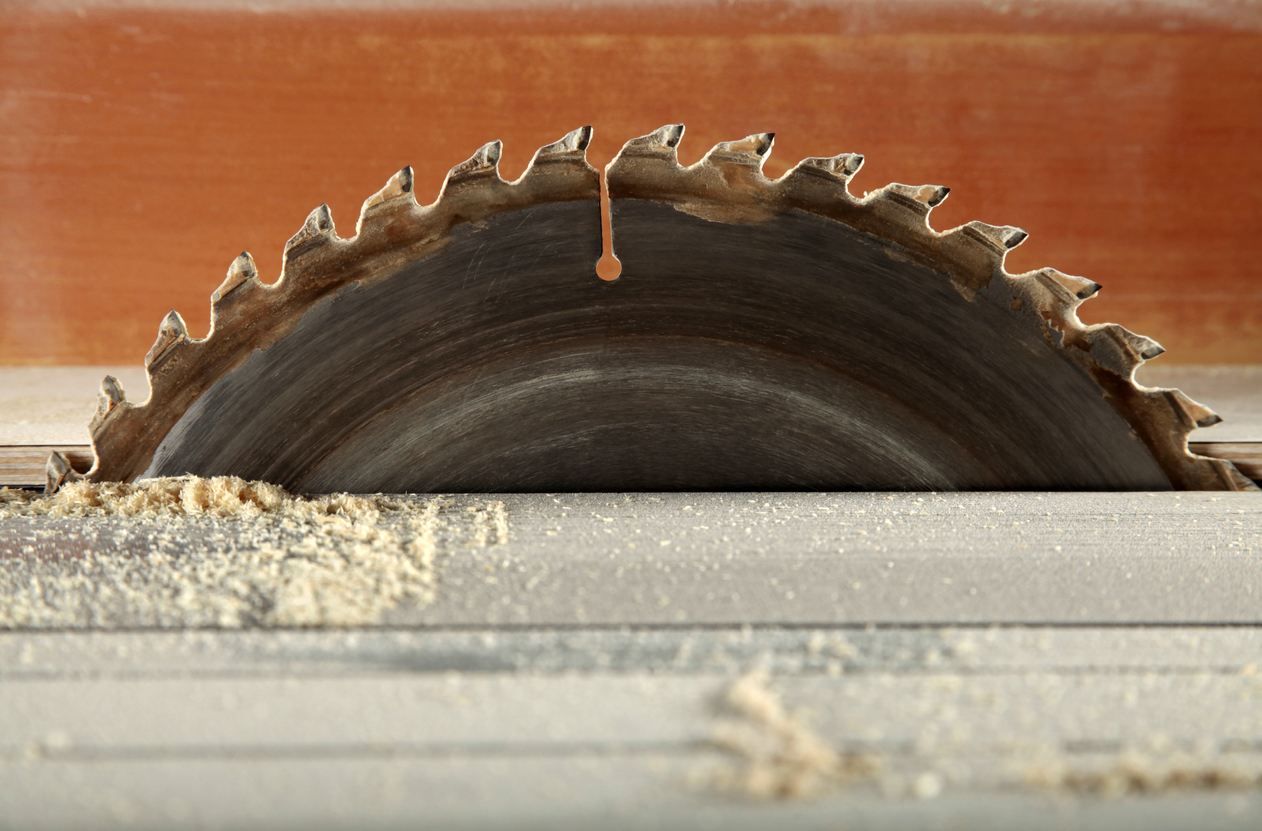We may earn revenue from the products available on this page and participate in affiliate programs. Learn More ›
Every time you use a power saw, you put your very own flesh and blood at risk. I’ve worked with more contractors than I like to think about who have lost fingers or sustained other injuries thanks to the powerful tools of the trade. According to the U.S. Consumer Product Safety Commission, in 1991 alone, nearly 12,000 people required emergency-room treatment for circular saw-related injuries.
I’ve observed that two kinds of sawers are the most likely to get hurt. The most obvious is the saw rookie, the person who uses a powerful cutting tool in ignorance. Ironically, the other class of workers that are in danger are the veterans who use their tools constantly, especially to perform repetitious tasks. Using the saw seems so natural, so automatic as to be second nature: then, the worker loses concentration and an accident happens.
How to Use a Saw
Preparation is the most important ingredient for making clean, accurate, safe cuts. To properly prepare for a cut, you must follow a strict regimen of steps:
- Determine and set up the saw and blade best for the material.
- Carefully measure and mark the cutting distance, angle, and depth.
- Adjust the saw controls to precisely match those measurements.
- Check that every element of the saw and workpiece are secured.
- Think through the cut you are about to make, rechecking your measurements.
- Finally, after each of these steps has been completed, you can put on a pair of safety goggles and perform the cut with the confidence of knowing that the result will turn out exactly like you’ve planned.
Rough Framing
Rough framing cuts are best accomplished with a circular saw. Its portable size makes it ideal for making fast rip and crosscuts into plywood and 2 x 4’s—a must for building a deck, house framing, and large-scale remodeling.
Smooth Cuts
Smooth intricate and curved cuts are made with a reciprocating saw. The tiny teeth cut in an upward motion as the saw is slowly pushed down a straight or curved path. The saw can also be plunged to make internal cutouts.
Notches and Cutouts
With the right blade a reciprocating saw can cut anything from soft woods to heavy metals. The saw’s shoe rests on the surface as the blade slices back and forth like a knife to cut through the material.
Saw Safety
Never take a tool for granted, no matter how familiar with it you may be. Just about any power saw can take off a fingertip—or more—in a second. The good news is that most accidents are preventable if these and other cutting tools are treated with respect and care. Employ the following strategies for avoiding mishaps.
Establish a pattern.
The first time and every time you use a power tool, do so from a balanced, comfortable stance. Once the workpiece is marked, locate it securely on a sawhorse, bench, or tabletop. Position the tool, too, so that your cutting stroke is easy and logical. Avoid awkward positioning.
Plan, pause, and then power up.
Once you are in position, mentally cut the piece. Are there any obstructions to the blade (that means in the piece itself, like old nails) or beneath the piece (like the top of your work surface)? Will the saw blade bind? Will the waste fall safely out of the way? Once the piece is cut, will either end be unbalanced and fall awkwardly, sending you or your saw for a ride? If you’re using a portable power tool, where will you put it after the cut has been made?
I suggest you make it a habit to pause for one moment each time you make a cut and ask yourself three more little questions, even if you’re making a cut identical to one you made a minute ago: First, are you wearing your safety glasses? Second, is the blade clear? And, third, are both of your hands safely positioned?
Keep your worksite neat.
Too much sawdust, carelessly strewn chunks of wood, piles of stock, or snaking power cords are all threats to the sawyer. A minor stumble with a spinning saw blade at hand can be disastrous.

Use only sharp blades.
A dull blade is an invitation to trouble and leads to unnecessary wear and tear on your equipment. With a dull blade, you’ll find yourself forcing the cut. Before sharpening or replacing your saw blade, always disconnect the saw from its power source.
Wear protective equipment.
Always wear your safety glasses: a scratched cornea, or worse, is never more than one tiny airborne sliver away. Other protective gear, like gloves and ear protection, may be appropriate, too.
Maintain your equipment.
- Check to be sure that the blade guard is functioning properly. In the case of a portable circular saw, the spring-loaded lower guard should pivot back into the blade housing as you cut, then automatically return to position after the cut. If the guard doesn’t work, set it aside to get repaired and use another saw until it is in safe condition again.
- Unless the tool is double-insulated, it should be equipped with a three-prong grounded plug. Do not remove the third prong. Three-pronged plugs should be plugged into a matching electrical receptacle or into adapters used with the ground wires properly attached.
- Some woodworkers complain that blade guards on table saws obstruct their vision. On the other hand, surveys suggest (no surprise here) that accidents are much less frequent on a properly protected table saw. Use the guards you have and install one if there is not.
- The switch location on table saws and radial arm saws and other fixed power tools is important. It should be within reach; switches that can be turned off without letting go of the workpiece, like loot-operated models, are a sensible precaution.
- Don’t forget periodically to inspect your power cords, because a cord in poor condition can be an electric shock just waiting to happen. In general, maintain your tools properly, whether it’s lubricating your worm-saw or cleaning the accumulated sawdust out of the table-saw housing.
Remember, safety saves time. If all these preparations sound time-consuming, keep in mind that injuries are expensive, both in emergency room bills and in lost time. You will also find that a little planning for safety often produces other efficiencies. The better organized you are and the more you make every operation a logical routine, the less time you spend looking for tools, randomly moving stock, and rushing into costly mistakes.


